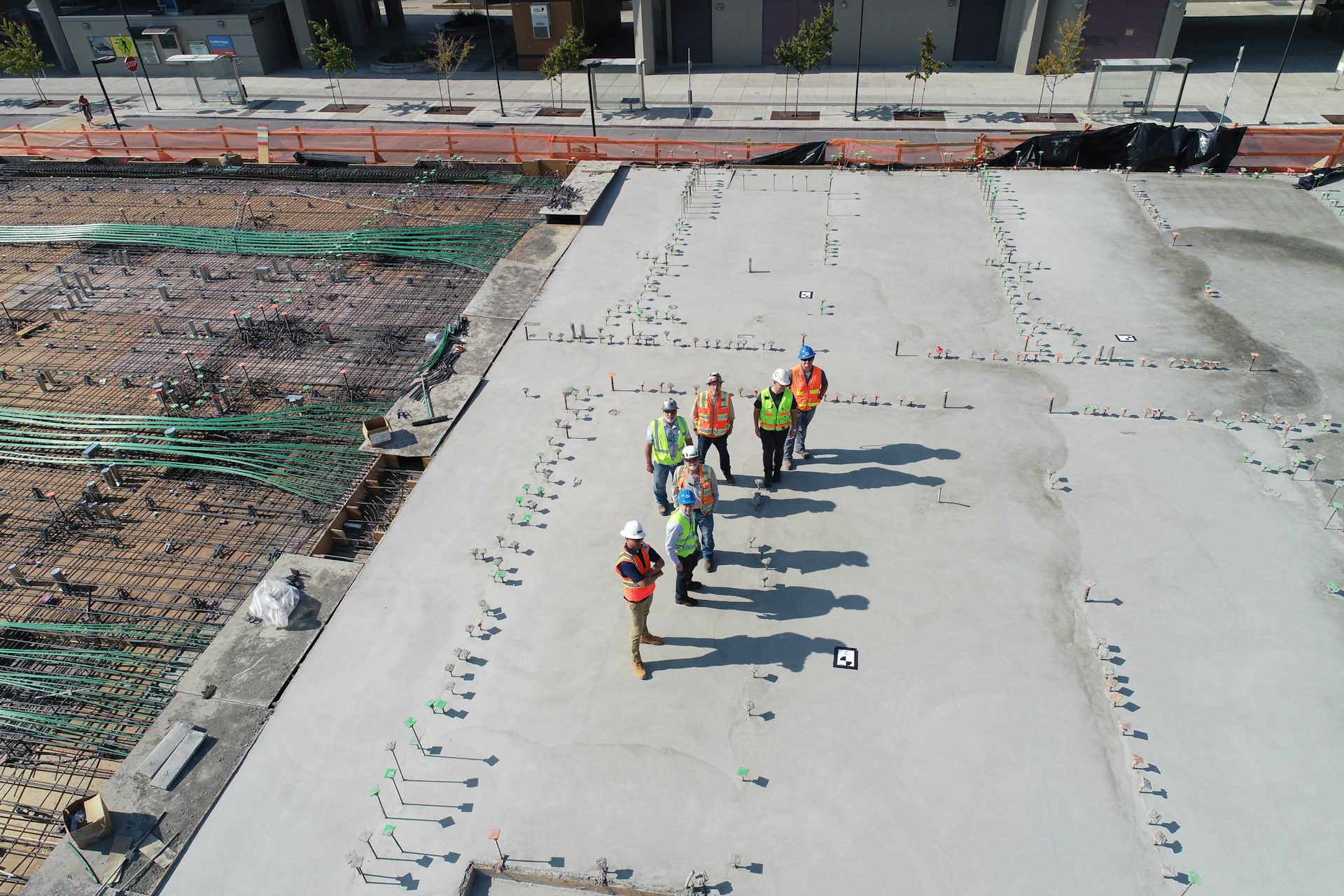Go Back
Last Updated :
Nov 7, 2025
The construction industry is constantly changing and evolving. New technologies and processes are regularly developed to improve the efficiency, safety, and sustainability of construction projects. Construction companies often struggle to adapt to these changes, particularly in terms of their financial implications. Understanding how to capitalize on research and development tax credits can make this transition much easier. In this article, we’ll explore how construction companies can benefit from R&D tax credits and how to claim them.
Haven, with its accounting services for small businesses, supports construction companies in their accounting, allowing them to focus on their core competencies. By partnering with Haven, you'll gain a trusted advisor who can help you uncover valuable R&D tax credits and optimize your financial performance for long-term success.
Table of Contents
How R&D Tax Credits Apply to Construction Companies and the Financial Benefits They Unlock
Familiar Challenges Construction Firms Face When Claiming R&D Tax Credits
Book a Call to Learn More About our Accounting Services (Trusted by 400+ Startups)
How R&D Tax Credits Apply to Construction Companies and the Financial Benefits They Unlock

Construction companies can qualify for R&D tax credits and potentially reduce their tax liability significantly if the claim is filed correctly. While many associate R&D with lab-based scientific work, the IRS recognises that technical problem-solving occurs in a wide range of industries, including construction.
How Technical Problem-Solving Can Unlock R&D Benefits in Construction
In construction, qualifying activities often relate to design, engineering, and improvements in methods or materials. This can include developing or refining construction techniques, testing new materials, or engineering custom solutions for challenging projects. The work doesn’t need to be groundbreaking or new to the industry, just new to your company. If your team tackles technical challenges where the outcome isn’t specific at the outset, those efforts may qualify.
Tax Benefits of R&D Tax Credits for Construction Firms
The R&D tax credit offers a dollar-for-dollar reduction in your federal tax liability. This can apply to:
Income taxes for established companies.
Payroll taxes for eligible startups (those under five years old with under $5 million in revenue).
Companies can claim up to $500,000 per year against payroll taxes if they qualify under the startup provision. For others, the credit can be used to reduce income taxes, and unused credits can be carried forward up to 20 years or carried back one year. Depending on the volume and scope of qualifying expenses (like wages, contractor costs, and supplies), the savings could reach tens or even hundreds of thousands of dollars.
R&D Tax Credits for Construction: Reassessing Eligibility
If your company hasn’t claimed the R&D tax credit before, now’s a good time to take another look. Many construction businesses mistakenly assume they don’t qualify, missing out on significant financial benefits. With today’s broader IRS definitions, design-build firms, specialty contractors, and even general contractors may be eligible for this benefit.
R&D Tax Credits: Not Just for Tech Anymore
Even better, if you haven’t claimed in previous years, you may be able to amend past returns and recover taxes you’ve already paid. The bottom line: the R&D tax credit isn’t just for tech and pharmaceuticals. It’s a valuable opportunity for construction companies to invest in more innovative and efficient building methods.
Qualifying R&D Activities & Expenses in Construction

Likely, your construction business is already conducting qualified R&D activities as part of your everyday work, often without realizing it. To qualify as a Qualified Research Activity (QRA), the work must be based on principles of:
Engineering
Physics
Chemistry
It must involve experimentation, testing, or evaluation to resolve technical uncertainty.
Examples of QRAs in Construction
These are some construction-related activities that may qualify for the R&D Tax Credit:
Modifying existing techniques or processes.
Using new materials or technologies to overcome technical challenges.
Designing or developing new or alternative structural systems.
Creating construction methods that reduce project timelines.
Adapting tools or techniques to improve efficiency or minimize environmental impact.
Developing new electrical or mechanical systems within buildings.
Applying mathematical models to predict or solve building-related issues.
Qualifying Research Expenditures (QREs)
The R&D tax credit calculation includes four categories of eligible costs:
Wages paid to employees directly performing, supervising, or supporting qualified research activities
Supplies used in qualified research, excluding land, improvements to land, and depreciable property
Rental or lease costs for computers or cloud hosting services directly related to qualified research
Contract research expenses paid to third parties (non-employees) for conducting qualified research on your behalf
Why 400+ Startups Trust Haven With Their Finances
Let your business take flight while Haven manages your financial runway. Built by founders for founders, we handle everything from daily bookkeeping to complex tax filings and R&D credits that put cash back in your pocket, as well as fractional CFO services. Join 400+ startups who've saved millions in tax credits, countless hours of administrative work, and never missed a filing deadline - all while accessing 24/7 Slack support from CPAs who understand the unique challenges of growing businesses. Book a call today to learn how our dedicated team can help you focus on building rather than bookkeeping.
Familiar Challenges Construction Firms Face When Claiming R&D Tax Credits

Identify R&D Activities to Maximize Your Claim
One of the frequent issues construction firms face is failing to recognize which of their day-to-day tasks count as R&D. The line between standard project work and technical innovation is often blurred. For example, designing a foundation system to accommodate unusual soil conditions may involve trial and error, but firms often view this as standard practice rather than a qualifying activity. Recognizing where technical uncertainty exists is essential, and documenting how your team addresses it is even more critical.
Documenting R&D Activities to Support Your Claim
Proper documentation is the foundation of a successful R&D tax claim. Construction firms often lack systems for tracking which employee hours, materials, and subcontractor costs relate directly to R&D. Without clear time logs, experiment records, or cost allocations, the IRS may disallow your claim, even if the work was legitimate. Setting up a process for capturing this data in real-time can prevent problems later and ensure your claim withstands scrutiny.
Understand Federal and State R&D Tax Credit Regulations
Many construction businesses operate across multiple states, which brings additional complexity when it comes to tax incentives. Each state may have its version of the R&D tax credit, with varying qualification standards and record-keeping expectations. Firms that only focus on federal credits could be missing out on extra savings or filing claims that don’t meet local requirements. Coordinating your claims strategy at both levels is crucial to maximize your return and ensure compliance.
Audit Concerns Shouldn't Stop You From Claiming R&D Tax Credits
Some construction firms avoid claiming R&D tax credits altogether due to concerns about triggering an audit. The truth is that claiming the credit does not increase your audit risk in itself, but poor documentation or inflated claims do. The key is to ensure clear, accurate records and a sound understanding of the qualifying activities that support your claim. That way, even if your claim is reviewed, you’ll be well-positioned to defend it.
Don’t Overlook Who Contributes to R&D Projects
A less obvious but equally costly challenge is undervaluing the amount of employee time spent on eligible R&D work. Many firms focus on engineers or senior technical roles when calculating credit, overlooking project managers, site supervisors, and skilled tradespeople who also contribute to problem-solving and technical experimentation. By working closely with team leaders and involving them in the tracking process, companies can gain a more accurate picture of who is contributing to R&D and increase the size of their claim accordingly.
How to Claim and Maximize Construction R&D Tax Credits

Start Documenting Everything Right Now
Construction firms can establish a strong R&D tax credit claim with meticulous documentation. Detailed records help demonstrate the technical challenges and innovative solutions that qualify for the R&D tax credit. Documenting the process from the very beginning is critical, as a lack of evidence can lead to audits and rejections.
Construction firms should track time spent on R&D activities, materials used, technical problems encountered, and any experimentation or testing carried out. This applies even to work that doesn’t lead to a final solution; unsuccessful attempts still count if they involve technical uncertainty. Make sure employee timesheets, project logs, and meeting notes clearly outline the R&D elements within a broader construction project.
Use Software to Track and Identify R&D Activities on Projects
Consider implementing project management software to help streamline the process of tracking and categorizing R&D activities. By tagging tasks or project segments that involve new methods, designs, or materials, teams can maintain a real-time audit trail. This reduces the burden of pulling together information at the end of the year and ensures accuracy when calculating eligible costs.
Identify Qualifying R&D Tax Credit Costs
Not all project expenses are eligible for R&D tax relief, so it’s critical to separate out the qualifying costs. These often include wages of employees directly involved in the R&D work, materials used for testing, and subcontractor costs (depending on the arrangement). Construction firms should avoid over-claiming by allocating only the portion of time and materials used for the qualifying research and development (R&D) component of a project.
Don’t Forget About State R&D Tax Credits
While the federal R&D tax credit is the primary benefit, many states also offer their own research and development (R&D) tax credits. Each state may define qualifying activities differently or provide different rates, so understanding the requirements in each region you operate in can help maximize your total benefit. Working with professionals familiar with state rules is highly recommended to avoid missed opportunities.
File Amended Returns for Prior Years to Claim Missed R&D Tax Credits
If your company hasn’t claimed R&D credits before, you may still be eligible to file retroactively for the previous three tax years. This can result in a sizeable refund, especially if your firm regularly encounters technical challenges that require customized solutions. Reviewing old projects with an R&D lens is a smart way to uncover missed opportunities.
Work With Construction R&D Tax Credit Experts
Given the complexity of R&D tax legislation and its unique application to the construction industry, it’s essential to seek guidance from professionals who understand both the technical and financial aspects. Experienced advisors can help you navigate recent IRS guidance, document your claim correctly, and avoid common pitfalls that could trigger delays or audits.
Related Reading
Book a Call to Learn More About our Accounting Services (Trusted by 400+ Startups)
Let your business take flight while Haven manages your financial runway. Built by founders for founders, we handle everything from daily bookkeeping to complex tax filings and R&D credits that put cash back in your pocket, as well as fractional CFO services. Join 400+ startups who've saved millions in tax credits, countless hours of administrative work, and never missed a filing deadline - all while accessing 24/7 Slack support from CPAs who understand the unique challenges of growing businesses. Book a call today to learn how our dedicated team can help you focus on building rather than bookkeeping.
